- Home
- Alistair Moffat
The Faded Map: The Lost Kingdoms of Scotland Page 9
The Faded Map: The Lost Kingdoms of Scotland Read online
Page 9
Dere Street was no narrow artery. So that two, wheeled vehicles travelling in opposite directions could pass, it was 7.7 metres wide on average and the metalling or bottoming was usually more than 30 centimetres deep. The principles of road building had been refined by centuries of experience. The surface was not flat but had a pronounced crest in the middle; this road mound was known as the agger. Drains ran on either side collecting water running down from the road mound. Bad weather was the greatest enemy and once a puddle was established, wheels splashed the gravel out of it and, if not repaired, it grew ever larger. Archaeologists have discovered that where one puddle was not repaired quickly, cart wheels bounced out of it and created a series of potholes of decreasing but destructive size in a straight line after it. Roads were routinely repaired after the winter rains, otherwise they would soon have disintegrated beyond effective use. While Roman roads were well maintained, they were not universally excellent. At the fort of Vindolanda a letter dated around AD 100 was found with a comment that travel was not advisable ‘dum viae malae sunt’, ‘while the roads are bad’.
The visual impact was also striking. Not only were the straight roads a new and unnatural colour in the landscape, they took up a great deal of space. On either side lay open pits where road stone had been quarried (and where road menders could find more if needed) and, beyond them, the scrub and woodland had been cut back where possible. Roman commanders worried about ambush. In the upper Clyde Valley, near the small fort at Crawford, not far from the modern A74, the old road avoids the flat ground by the banks of the river and instead climbs up a hill to the north. The reason for all the additional labour – and making the soldiers sweat – was fear of ambush. The route by the Clyde was flat but it passed through a narrow valley and native warriors could easily have surprised a Roman column from the higher ground.
There are more than 400 miles of Roman roads in Scotland and they helped shape history long after the fall of the Western Empire. Armies continued to march on them in both directions. When Edward II of England came north before his fateful encounter with Robert the Bruce at Bannockburn, he led his soldiers along Dere Street. As the road climbed up through the Cheviot Hills and the English army slowed, it was said that it was strung out for more than twenty miles.
The old road had more peaceful uses and the section from Melrose to Edinburgh was known as ‘the Malcolmisrode’ after the medieval Scottish kings of that name. Also recorded as ‘the Via Regis’, it carried a good deal of mercantile traffic and was kept in decent condition. Up on the windblown wastes of Soutra Hill, about a mile west of the modern A68, a long run of Dere Street is still clearly visible. What brings it out of the heather and bracken are the dead straight lines of the ditching on either side.
There are also hints that Dere Street acted as a political boundary for one of the more shadowy kingdoms of the Dark Ages. Calchvynydd was said to be based at Roxburgh Castle near Kelso in the sixth century and its territory extended westwards between the Tweed and the Teviot as far as the line of the road.
Once Lollius Urbicus had refortified Trimontium, he led his army north to the Firth of Forth. Antoninus Pius needed a blaze of glory, something triumphant to give the city of Rome and all of its factions and interests the sense that not only was he capable as a commander-in-chief but he could also expand the empire. Hadrian had made himself deeply unpopular with his policy of retrenchment. ‘What could not be held would be given up’ made good military sense but was bad politics. Rome’s ruling class of senatorial families and those who aspired to it had grown wealthy on the expansion of the empire and, in the defeat and subjugation of barbarians, there had been prestige as well as profit. When, at the beginning of his reign, Hadrian had ordered the murder of four alleged plotters – senators and men of consular rank – he had alienated the Roman elite and never been forgiven for it. It was one compelling reason for him to spend eleven years of his long reign out of the city, touring the provinces and the imperial frontier. Antoninus Pius was determined on a different course and so Lollius Urbicus was ordered north to resume conquest, what had been seen as Rome’s divine mission.
Hadrian’s Wall was abandoned and replaced with what has become known as the Antonine Wall. Much shorter, it ran for thirty-nine miles from Old Kilpatrick on the Clyde to Bo’ness on the Firth of Forth. Work appears to have begun in the east, probably in the spring of 142. Less elaborate than the wall a hundred miles to the south, it took only two years to complete.
Once surveyors had pegged out the line, making sure the wall took the commanding ground at every opportunity, soldiers dug out shallow foundations. Having laid a stone footing with kerbs on either side to prevent spreading, they then built it up to height with turfs. These were large and Trajan’s Column shows men carrying them on wooden backpacks. After it had been topped with a wooden palisade and the turf had dried and settled, the wall stood at thirteen feet high. A ditch was dug on the northern side to make it seem more massive and, to the south, a military road ran behind. Beyond the ditch lilia were hidden. Small pits filled with sharpened stakes and covered over with brush, these vicious traps show that the wall was certainly seen as a defensive rampart expecting trouble from the north. With seventeen forts and about forty fortlets built along its length, the wall amounted to a densely packed and formidable garrison. The Romans did not often waste resources and some of their more peaceful frontiers could be very thinly manned. Lollius Urbicus packed the Antonine Wall with soldiers because beyond it, and also perhaps behind it, lay substantial threats.
Either before or after completion of the huge building project, the peoples of the Clyde Valley were subdued. Coins commemorating a Roman victory were minted in 142 or 143. On Ptolemy’s map the Damnonii, sometimes Dumnonii, are marked as the kindred controlling the Clyde Valley and the lands around the shores of the Firth. One of their principal strongholds was on the summit of the remarkable Alt Clut (Dumbarton Rock) which rises almost sheer on the north-western coast of the estuary.
The Damnonii share their name with Dumnonia, a Celtic kingdom of the south-west of England. Its likely derivation might have arisen out of the geology of both areas. Damnonii probably means ‘the Deepeners’ – those who deepen the earth, miners. Coal could be dug from heughs or outcrops in several places along the Clyde and in Devon and Cornwall tin was mined and a lucrative trade created around its production.
No record of a campaign against the Damnonii survives, only the conquest of their territory. Their dramatic acropolis at Dumbarton Rock is immensely old and it has the longest documented history of any stronghold in Britain. Its modern name derives from Dun Breatainn, Atlantic Celtic for ‘the Fort of the Britons’, while the older name of Altcluit is a Continental Celtic form for ‘the Rock of the Clyde’. By 144 and the completion of the great wall which reached the Clyde only three miles to the east, the ancient fortress was one of the northernmost bastions of the Empire.
The effect of the Antonine Wall must have been dramatic, jaw-dropping. Warfare between the kindreds had certainly had political effects and no doubt been destructive and bloody but the defeat of one war band by another had not altered the landscape in the way the legions had. Landward movement between north and south was severely restricted and tightly controlled, as was any unauthorised activity in the military zone along its length. Since its location depended on strategic imperatives and these ignored everything else, many farms were either destroyed or made very difficult to manage. Pastoral societies must have the ability to move flocks and herds around and relieve grazing from too much pressure.
But it was not destined to last. After only twenty years, the Antonine Wall was abandoned as the imperial frontier retreated south to Hadrian’s Wall. Under the Emperor Marcus Aurelius, retrenchment once again became Roman policy. It is likely that the more vulnerable turf wall was cast down by those who were affronted by it and resented its presence and who wished to move freely again. But what remained, and is still the most obvious relic of the Antonine W
all, was the defensive ditch in front of the rampart. At Rough Castle and at Watling Lodge and Callendar Park in Falkirk, there are stretches where it is very impressive. Apart from historians, few knew it as the Antonine Wall until present times. The ditch appears to have conferred its earlier name. Greim is Atlantic Celtic for ‘a bite’ and the wall became known as ‘the Grimsdyke’ as though men with mattocks and shovels had taken a bite out of the ground. Sometimes written as Graham’s Dyke, this version probably came from Greumaich, the Gaelic equivalent of ‘Graham’.
Although Scotland south of the Forth–Clyde line was part of the Empire for only twenty years, this brief period of Romanisation may have had more than a passing effect. With so much left behind, so much military architecture obvious in the landscape – two walls as boundaries, thirty forts and other substantial installations and long stretches of roads – there is a growing sense that the kings of this part of the north saw themselves differently.
No record of the diplomacy undertaken by Lollius Urbicus and his officers survives but, if Antoninus Pius intended southern Scotland to become part of the empire, discussions and negotiations with native kings and their counsellors must have taken place. Rome was always anxious to avoid the waste of men and materials if accommodations could be found. Peace was cheaper and examples from all over the empire illustrate Roman willingness to absorb new peoples by treaty and agreement. On Traprain Law in East Lothian, one of the power centres of Votadinian kings, significant finds of second-century Roman artefacts have turned up. These may well have been gifts, encouragements to the kindreds of the south-east to remain friendly.
Tacitus described how Agricola took care to make the benefits of Romanisation attractive in the south where ‘the toga was everywhere to be seen’ amongst native elites, and there is no reason to think that policy had changed under the governorship of Lollius Urbicus and his successors. For twenty years – a generation – the kindreds of the south of Scotland were part of the empire and many of those who ruled over them probably found the notion attractive, even exotic. Like Syrians, Egyptians and Numidians, they were now with Rome and, like Lollius Urbicus’ family, they may have seen the empire as an opportunity, a career. And even in 163, when the frontier was pulled back to Hadrian’s Wall, those glamorous aspirations may only have dimmed a little – the Empire might return, the infrastructure was waiting.
Successful ambush obviously depended on surprise but what could convert surprise into disabling shock was speed and earth-shattering sudden noise. At Deskford in Banffshire, the source of the latter was accidentally discovered in 1816. According to a later report:
There was found, about twenty years ago, on the confines of a farm called Leichestown, the resemblance of a swine’s head in brass, of the ordinary size, with a wooden tongue moveable by springs. It also had eyes, and the resemblance in every respect was wonderfully exact. It was found at a depth of about six feet, in a mossy and knolly piece of ground on a bed of clay. The ground abounded with hazel-nuts, which looked entire, but upon being opened, were found empty.
It was a carnyx, a famous type of Celtic trumpet. Diodorus Siculus wrote that ‘their trumpets again are of a peculiar barbarian kind; they blow into them and produce a harsh sound which suits the tumult of war’. The beautiful boar’s head with the wooden clapper was mounted on a long vertical tube which terminated in a mouthpiece turned towards the player in an elongated s-shape or j-shape. On a well-known cauldron found at Gundestrup in Denmark, three carnyx players are shown holding up their tall instruments to their mouths.
Like the Highland clans with their bagpipes, the northern kindreds charged into battle at the sound of the carnyx. And just as pipers could act as buglers, sounding different orders over the din of war cries and screams, so the carnyx was used by native commanders to control their warriors.
When presented with a replica of the Deskford carnyx, the musician, John Kerry, discovered a surprising range. Most interesting was the ability of the instrument to imitate animal noises and, in particular, those made by a charging wild boar. Like the Australian didgeridoo, it was also possible to reproduce sounds like proto-speech very loudly. Several carnyxes blasting into life at the same time must have been terrifying.
Animals were long seen by the northern kindreds as tremendously powerful symbols. And, since carnyx heads could be cast to represent a great range of creatures, it may be that the men who raised their weapons and charged when the Deskford trumpet sounded felt themselves both protected and empowered by the aggressive virtues of the wild boar. When Ptolemy plotted the names of the kindreds of the furthest north, he marked down the Orkoi, the Boar People of the Orkneys, the Caereni, the Sheep Folk of the north west, the Lugi, the Ravens of Sutherland as well as the Epidii, the Horse Masters of Kintyre and the Venicones, the Kindred Hounds of Fife.
The second requirement for a successful ambush was such speed as to allow little or no time for the enemy to react, organise themselves and form into anything other than a ragged defensive alignment. Chariots and cavalry racing from cover out across the open ground on either side of a Roman road could achieve devastating speed. Tacitus mentioned chariots at Mons Graupius and thought them ineffective. Caesar disagreed and here is what he saw in southern Britain in 55 BC:
In chariot fighting the Britons begin by driving all over the field hurling javelins. Generally, the terror inspired by the horses and the noise of the wheels are sufficient to throw their opponent’s ranks into disorder. Then, after making their way between the squadrons of their own cavalry, they jump down from the chariots and engage on foot. In the meantime, the charioteers retire a short distance from the battle and place their vehicles in such a position that their masters, if hard pressed by numbers, have an easy means of retreat to their own lines. Thus, they combine the mobility of cavalry with the staying power of infantry.
Celtic metalwork was much prized and the long slashing sword described by Tacitus, the spatha, could be fearsomely sharp. It was more effective as a cavalry sabre and usually only members of a teulu could hope to own a battle sword. Spears were much more common and warriors generally carried two – a heavier for thrusting in close-quarter combat and a lighter for throwing. In Europe, Celtic armies were known as Gaesatae, ‘the Spearmen’. Shields carried by cavalry troopers were necessarily small and used for parrying rather than protection. Infantry carried longer and larger shields and both sorts had a metal boss in the centre, in front of the handgrip, so that it could be used as an offensive weapon.
Roman commentators often remarked on the Celtic habit of fighting naked. Wearing only a helmet, a torc around the neck and a sword belt, warriors were seen charging into battle wearing no protection whatever – at least none that a Roman would recognise. But it was there in the minds of the naked warriors. Most men wore tattoos that they probably saw as powerful talismans. Animals appear to have been especially revered – the horse, the wild boar, the hound, the raven and the bull all had characteristics, either real or imagined, which warriors believed would help them. There are obvious links between kindred names, the sounds of the carnyx which sent them into battle and what had been impregnated on their bodies. No doubt the Romans thought nudity made Celtic warriors easier to kill.
No written records exist to support these likely suppositions – or indeed the heroics or ignominies of native soldiers and their teulus. Roman reaction is almost always the only guide and the appearance of particular sorts of coins suggests that, in the 150s, there was war in the north once again. It seems that the kings of the Anavionenses attacked and destroyed Blatobulgium, the fort at Birrens in Annandale. A coin issued in 155 celebrates an important Roman victory in Britain, almost certainly successful retaliation for the attack. The usual way of illustrating the defeat of native forces was to show the figure of Britannia (very much like the image on old pennies) with her head bowed. Remarkable archaeology has uncovered evidence of Roman campaigning against the Anavionenses – although its dates are by no means certain.
During the second half of the second century, conflict broke out regularly in the north. Because it was the only notable military success of his reign, the conquest of southern Scotland had to be maintained while Antoninus Pius was emperor. When the frontier was pulled back to Hadrian’s Wall after his death, aggression from the north did not abate. During the reign of the deranged Commodus, serious trouble threatened the whole of Britannia. The northern kindreds burst through the wall defences and into the province where ‘they killed a general at the head of his forces’. This may have been the governor, probably the victim of ambush or surprise attack. Archaeology at the forts of Rudchester, Halton Chesters and Corbridge suggests that the northern army invaded down Dere Street and broke through in the east.

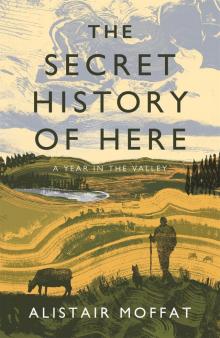 The Secret History of Here
The Secret History of Here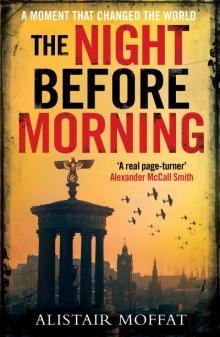 The Night Before Morning
The Night Before Morning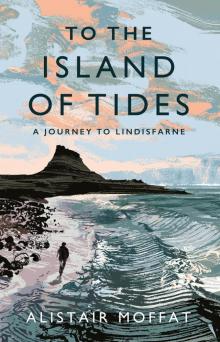 To the Island of Tides
To the Island of Tides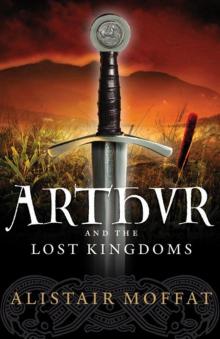 Arthur and the Lost Kingdoms
Arthur and the Lost Kingdoms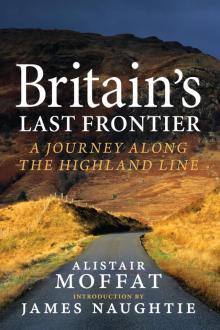 Britain’s Last Frontier
Britain’s Last Frontier The Faded Map: The Lost Kingdoms of Scotland
The Faded Map: The Lost Kingdoms of Scotland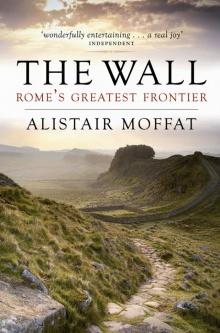 The Wall
The Wall